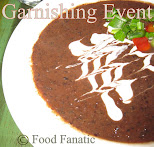 I was super tired tonight but I really wanted to cook my dad something fresh. I know he likes a curry with Indian bread for dinner. So today I made him that. He is my biggest critic but said I get an A+ for tonight's dinner. I guess my effort was worth it after all ;)
I was super tired tonight but I really wanted to cook my dad something fresh. I know he likes a curry with Indian bread for dinner. So today I made him that. He is my biggest critic but said I get an A+ for tonight's dinner. I guess my effort was worth it after all ;)I learned this recipe from my mother but I made modifications along the way.
Ingredients
1. 3 medium sized potatoes, chopped into inch sized Sqaures. Alternatively you can use mashed potatoes.
2. 2 large ripe tomatoes, chopped. My mom says more the tomato, better the taste.
3. 2 tablespoons olive oil
4. 1 teaspoon mustard seeds
5. 1 teaspoon cumin seeds
6. 1/2 teaspoon fenugreek (methi) seeds. I have learned that we add methi to any vegetable with gravy (curry)
7. 1/2 onion, chopped
8. 1 teaspoon garlic, minced
9. 1/2 teaspoon ginger, minced
10. 1/2 teaspoon turmeric powder
11. 1/4 teaspoon red chili powder
12. 2 teaspoons coriander powder
13. 2 teaspoons salt
14. 1/4 teaspoon garam masala
15. 1/4 teaspoon heeng
16. 1 teaspoon aamchoor powder (dried mango)
Instructions:
1. Heat olive oil in a pressure cooker.
2. Add mustard seeds and allow to crackle.
3. Add cumin seeds and fenugreek and allow the spluttering to fasten
4. Add onion, garlic, and ginger and cook until onion turns golden brown
5. Add turmeric powder, red chili powder, coriander powder, garam masala, amchoor powder, heeng, and cook until the oil leaves the onion-ginger-garlic paste.
6. Add potatoes and cook until the potatoes turn golden brown. This adds taste to the dish as the potatoes become slightly crunchy
7. Add tomatoes and cook for a few minutes.
8. Add 3 cups of water and add salt.
9. Close the lid of the pressure cooker, cook on high heat and allow 3 whistles to blow. If the tomatoes are not as ripe, allow 5 whistles.
10. Remove from the heat and allow the pressure cooker to open by itself.
I love to eat this with white rice. But usually it is eaten with roti or paranthas.









































